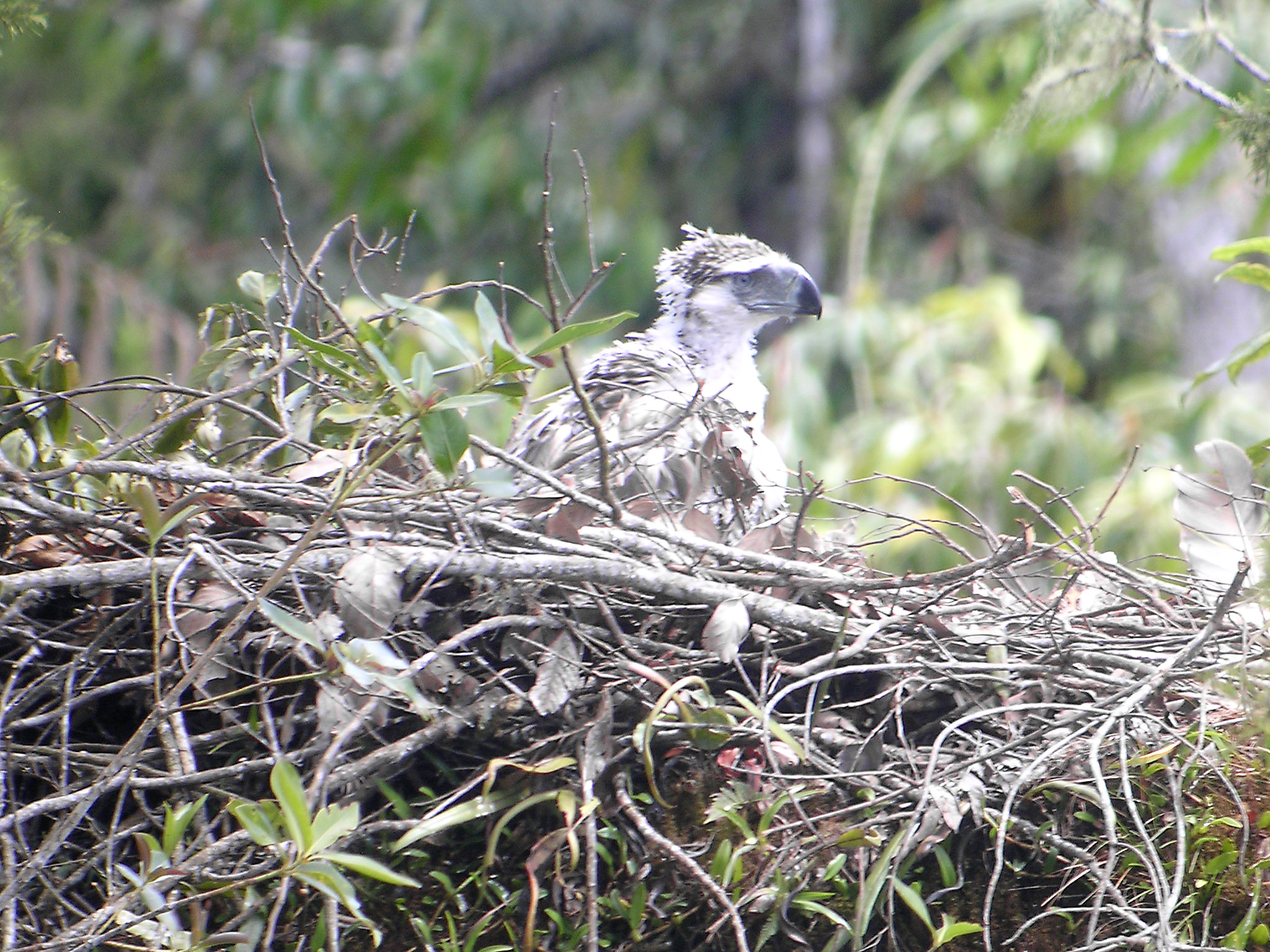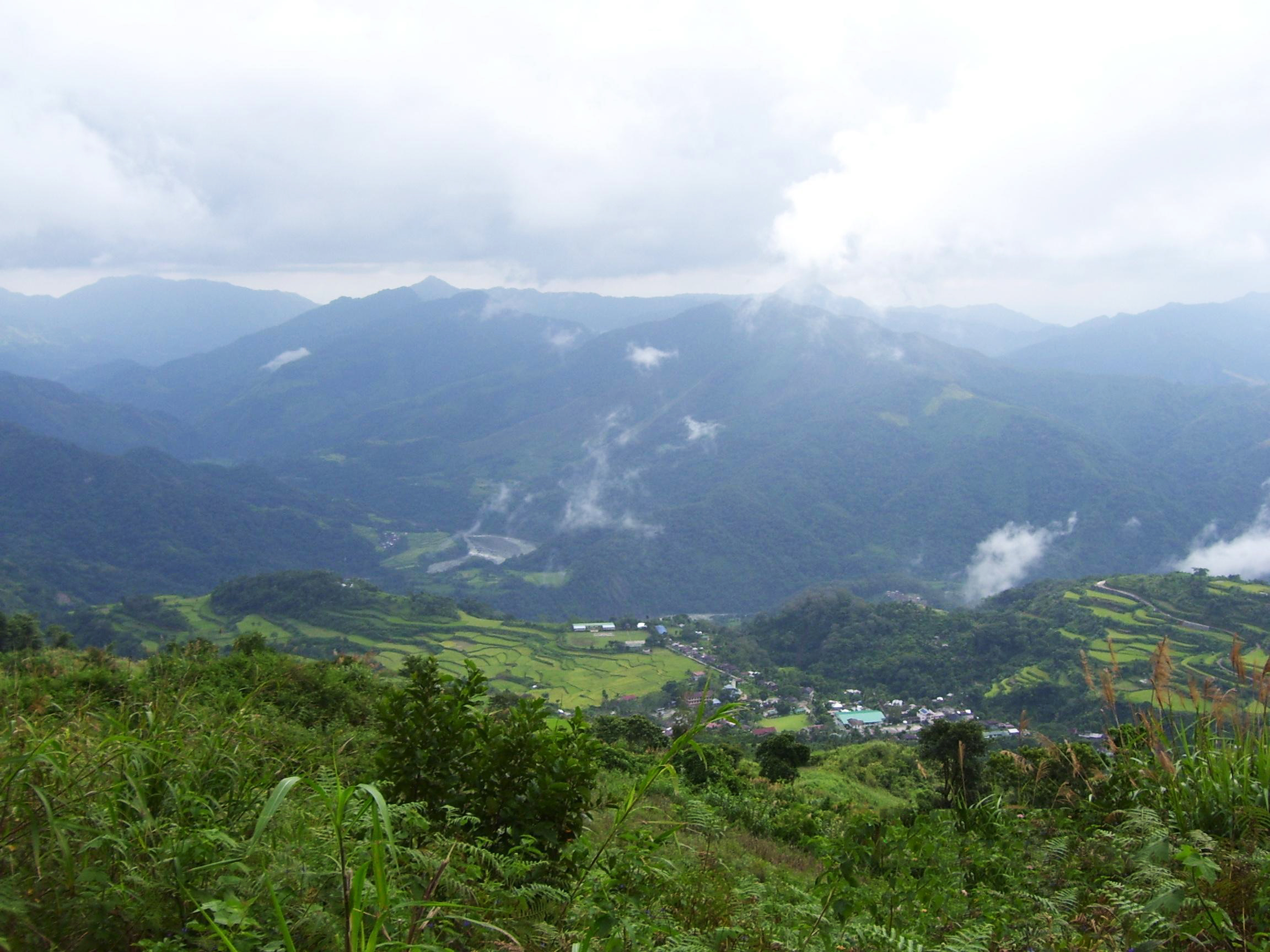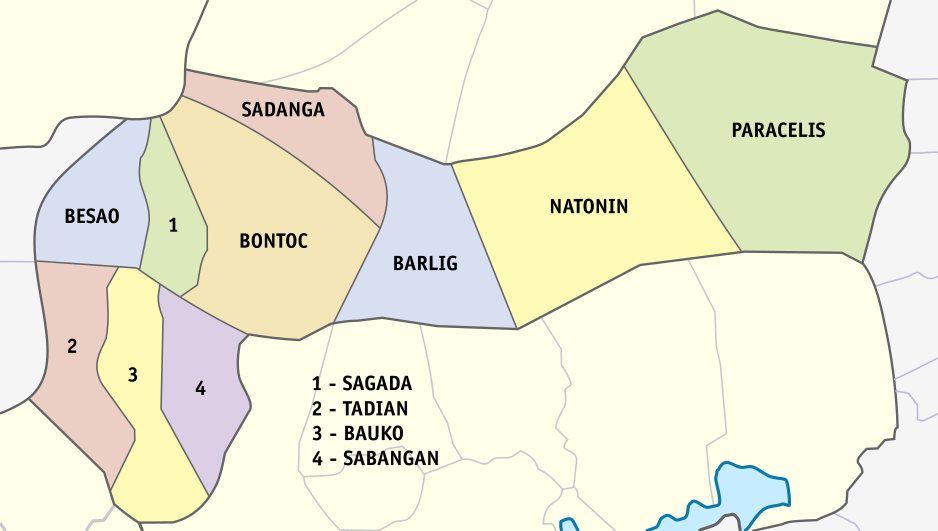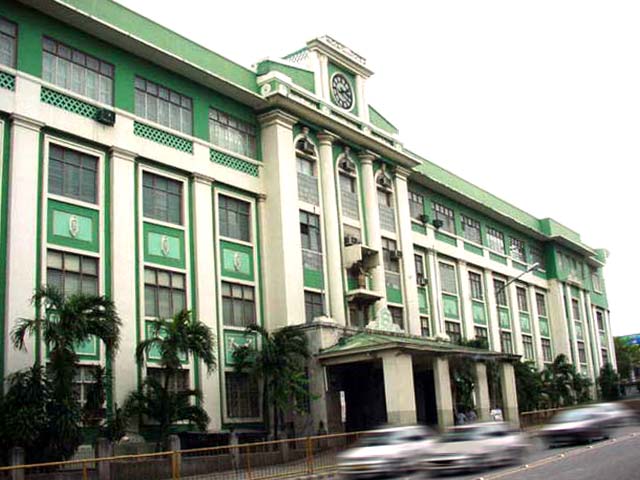|
Kalinga-Apayao
Kalinga-Apayao () was a province of the Philippines in the Cordillera Administrative Region in the island of Luzon. It was formed, along with Benguet, Ifugao, and the new Mountain Province, from the earlier Mountain Province, with the passage of ''Republic Act No. 4695'' in 1966. The said law was amended by ''RA No. 7878'' in 1995, which divided the province into two new ones, Kalinga and Apayao. As part of a cult of personality, long-time President Ferdinand Marcos made gradual changes to the borders of Kalinga-Apayao over the course of his rule with the aim of making the outline of the province, on a map, resemble the silhouette of his own head, facing towards his own native province of Ilocos Norte. The plan was unfinished when Marcos was overthrown in 1986. History Prior to the establishment of the province, the sub-provinces of Kalinga and Apayao, upon their establishment through ''Act No. 1642'' in 1907, were used to be part of Lepanto-Bontoc (as Kalinga was taken from Cag ... [...More Info...] [...Related Items...] OR: [Wikipedia] [Google] [Baidu] |
Apayao Province
Apayao, officially the Province of Apayao ( ilo, Probinsia ti Apayao; fil, Lalawigan ng Apayao), is a landlocked province in the Philippines in the Cordillera Administrative Region in Luzon. Kabugao serves as its capital. The provincial capitol and its associated offices are located at the New Government Center in Luna. The province borders Cagayan to the north and east, Abra and Ilocos Norte to the west, and Kalinga to the south. Prior to 1995, Kalinga and Apayao comprised a single province named ''Kalinga-Apayao'', which was partitioned to better service the needs of individual ethnic groups. With a population of 124,366 (as of the 2020 census) covering an area of , Apayao is the least densely-populated province in the Philippines. History By 20th century, Apayao is predominated by the Isneg people. They are located primarily in the highland municipalities of Kabugao and Calanasan. Majority of them live in scattered settlements along the upper reaches of the Apayao-Abu ... [...More Info...] [...Related Items...] OR: [Wikipedia] [Google] [Baidu] |
Apayao
Apayao, officially the Province of Apayao ( ilo, Probinsia ti Apayao; fil, Lalawigan ng Apayao), is a landlocked Provinces of the Philippines, province in the Philippines in the Cordillera Administrative Region in Luzon. Kabugao, Apayao, Kabugao serves as its capital. The provincial capitol and its associated offices are located at the New Government Center in Luna, Apayao, Luna. The province borders Cagayan to the north and east, Abra (province), Abra and Ilocos Norte to the west, and Kalinga (province), Kalinga to the south. Prior to 1995, Kalinga and Apayao comprised a single province named ''Kalinga-Apayao'', which was partition (politics), partitioned to better service the needs of individual ethnic groups. With a population of 124,366 (as of the 2020 census) covering an area of , Apayao is the least Population density, densely-populated province in the Philippines. History By 20th century, Apayao is predominated by the Isneg people. They are located primarily in the hi ... [...More Info...] [...Related Items...] OR: [Wikipedia] [Google] [Baidu] |
Cordillera Administrative Region
The Cordillera Administrative Region (CAR; ilo, Rehion/Deppaar Administratibo ti Kordiliera; fil, Rehiyong Pampangasiwaan ng Cordillera), also known as the Cordillera Region and Cordillera (), is an administrative region in the Philippines, situated within the island of Luzon. It is the only landlocked region in the insular country, bordered by the Ilocos Region to the west and southwest, and by the Cagayan Valley Region to the north, east, and southeast. It is the least populous region in the Philippines, with a population less than that of the city of Manila. The region comprises six provinces: Abra, Apayao, Benguet, Ifugao, Kalinga and Mountain Province. The regional center is the highly urbanized city of Baguio. The region was officially created on July 15, 1987, and covers most of the Cordillera Central (Luzon), Cordillera Mountain Range of Luzon and is home to numerous ethnic peoples. The Nueva Vizcaya province has a majority of Igorot people, Igorot population, but w ... [...More Info...] [...Related Items...] OR: [Wikipedia] [Google] [Baidu] |
Provinces Of The Philippines
In the Philippines, provinces ( fil, lalawigan) are one of its primary political and administrative divisions. There are 82 provinces at present, which are further subdivided into component cities and municipalities. The local government units in the National Capital Region, as well as independent cities, are independent of any provincial government. Each province is governed by an elected legislature called the Sangguniang Panlalawigan and an elected governor. The provinces are grouped into seventeen regions based on geographical, cultural, and ethnological characteristics. Thirteen of these regions are numerically designated from north to south, while the National Capital Region, the Cordillera Administrative Region, the Southwestern Tagalog Region, and the Bangsamoro Autonomous Region in Muslim Mindanao are only designated by acronyms. Each province is a member of the League of Provinces of the Philippines, an organization which aims to address issues affecting provi ... [...More Info...] [...Related Items...] OR: [Wikipedia] [Google] [Baidu] |
Republic Acts Of The Philippines
This article contains a partial list of Philippine laws. Sources of Philippine laws ;Notes : *Customs may be considered as supplementary source of law, however, customs which are contrary to law, public order or public policy shall not be countenanced Abbreviations Philippine laws have had various nomenclature designations at different periods in the history of the Philippines, as shown in the following table: Notable laws The following table lists Philippine laws which have been mentioned in Wikipedia, or are otherwise notable. Only laws passed by Congress and its preceding bodies are listed here; presidential decrees and other executive issuances which may otherwise carry the force of law are excluded for the purpose of this table. Lists of laws by year 2020 2019 2018 (10967–11166) 2017 (10925–10966) 2016 (10740–10924) 2015 (10653–10739) 2014 (10635–10652) 2013 (10355–10634) 2012 (10157–10354) 2011 (10148–10156 ... [...More Info...] [...Related Items...] OR: [Wikipedia] [Google] [Baidu] |
Kalinga (province)
; tl, Lalawigan ng Kalinga) , native_name = , other_name = , settlement_type = , image_skyline = , image_caption = (from top: left to right) Bum-bag Rice Terraces, Pasil Valley, Lubuagan Mountains, Mount Manting-oy, Mount Binuluan and Tabuk City Hall. , image_flag = PH-KAL Flag.png , flag_size = 100x80px , image_seal = , seal_size = 100x80px , image_map = , map_caption = Location in the Philippines , coordinates = , subdivision_type = Country , subdivision_name = , subdivision_type1 = Region , subdivision_name1 = , established_title = Founded , established_date = May 8, 1995 , seat_type = Capital , seat = Tabuk , leader_party = , leader_title = Governor , leader_name = James S ... [...More Info...] [...Related Items...] OR: [Wikipedia] [Google] [Baidu] |
Mountain Province
Mountain Province is a landlocked province of the Philippines in the Cordillera Administrative Region in Luzon. Its capital is Bontoc. Mountain Province was formerly referred to as ''Mountain'' in some foreign references. The name is usually shortened by locals to ''Mt. Province''. The province was named so for being in the Cordillera Central mountain range found in the upper realms of Luzon island. Mountain Province was also the name of the historical province that included most of the current Cordillera provinces. This old province was established by the Philippine Commission in 1908, and was later split in 1966 into Mountain Province, Benguet, Kalinga-Apayao and Ifugao. The province is also known for its mummy caves, which contain naturally mummified bodies, and for its hanging coffins. History Spanish period The area of the Cordillera mountains proved difficult to control by the Spaniards. During the long Spanish rule, not much was done to bring the province under con ... [...More Info...] [...Related Items...] OR: [Wikipedia] [Google] [Baidu] |
Kalinga Province
; tl, Lalawigan ng Kalinga) , native_name = , other_name = , settlement_type = , image_skyline = , image_caption = (from top: left to right) Bum-bag Rice Terraces, Pasil Valley, Lubuagan Mountains, Mount Manting-oy, Mount Binuluan and Tabuk City Hall. , image_flag = PH-KAL Flag.png , flag_size = 100x80px , image_seal = , seal_size = 100x80px , image_map = , map_caption = Location in the Philippines , coordinates = , subdivision_type = Country , subdivision_name = , subdivision_type1 = Region , subdivision_name1 = , established_title = Founded , established_date = May 8, 1995 , seat_type = Capital , seat = Tabuk , leader_party = , leader_title = Governor , leader_name = James S ... [...More Info...] [...Related Items...] OR: [Wikipedia] [Google] [Baidu] |
Benguet
Benguet (), officially the Province of Benguet ('';'' ; pag, Luyag/Probinsia na Benguet; ilo, Probinsia ti Benguet; ), is a landlocked province of the Philippines located in the southern tip of the Cordillera Administrative Region in the island of Luzon. Its capital is La Trinidad. The highland province is known as the ''Salad Bowl of the Philippines'' due to its huge production of upland vegetables. Situated within the interior of Benguet is the highly urbanized city of Baguio, which is administered independent from the province. History The mountainous area now covered by Benguet is generally presumed to have been settled from at least the 14th century by tribes coming from the surrounding lowlands, lured by the abundance of natural resources such as gold, hides, and wax. Two of these groups, the Ibaloi and the Kankanaey, are dominant ethnolinguistic groups of the area. In the pre-conquest period, these tribes enjoyed flourishing trade with lowland groups immediately ... [...More Info...] [...Related Items...] OR: [Wikipedia] [Google] [Baidu] |
Ifugao
Ifugao, officially the Province of Ifugao ( ilo, Probinsia ti Ifugao; tl, Lalawigan ng Ifugao), is a landlocked province of the Philippines in the Cordillera Administrative Region in Luzon. Its capital is Lagawe and it borders Benguet to the west, Mountain Province to the north, Isabela to the east, and Nueva Vizcaya to the south. The Rice Terraces of the Philippine Cordilleras and Banaue Rice Terraces are the main tourist attractions in the province. These terraces are believed to have been hand-carved into the mountains 2,000 years ago to plant rice. However, recent research by carbon dating suggests that they were built much later. In 1995, the Rice Terraces of the Philippine Cordilleras were declared as a UNESCO World Heritage Site. In 2008 and 2015, the ''Hudhud chants of the Ifugao'' and the ''Punnuk (Tugging rituals and games)'' were inscribed in the UNESCO Intangible Cultural Heritage Lists. Etymology Ifugao is named after the term ''i-pugo'' (''"i"'' rom/peopleand ' ... [...More Info...] [...Related Items...] OR: [Wikipedia] [Google] [Baidu] |
University Of San Carlos
The University of San Carlos, also referred to by its acronym USC or colloquially shortened to San Carlos, is a private, Catholic, research, coeducational basic and higher education institution administered by the Philippine Southern Province of the Society of the Divine Word (SVD) missionaries in Cebu City, Philippines since 1935. It offers basic education (Montessori academy, grade school, junior high school and senior high school) and higher education (undergraduate and graduate studies). Founded originally in 1595 as Colegio de San Ildefonso, it later became the Colegio-Seminario de San Carlos in 1783 and finally obtained university charter in 1948. USC has 5 campuses with combined land area of 88 hectares or 217 acres (Talamban campus has 78 hectares). The Commission on Higher Education has recognized 8 of its programs as Centers of Excellence and 12 of its programs as Centers of Development as of March, 2016. USC is ranked by the International/Asia Quacquarelli Symonds ( ... [...More Info...] [...Related Items...] OR: [Wikipedia] [Google] [Baidu] |
Washington, D
Washington commonly refers to: * Washington (state), United States * Washington, D.C., the capital of the United States ** A metonym for the federal government of the United States ** Washington metropolitan area, the metropolitan area centered on Washington, D.C. * George Washington (1732–1799), the first president of the United States Washington may also refer to: Places England * Washington, Tyne and Wear, a town in the City of Sunderland metropolitan borough ** Washington Old Hall, ancestral home of the family of George Washington * Washington, West Sussex, a village and civil parish Greenland * Cape Washington, Greenland * Washington Land Philippines *New Washington, Aklan, a municipality *Washington, a barangay in Catarman, Northern Samar *Washington, a barangay in Escalante, Negros Occidental *Washington, a barangay in San Jacinto, Masbate *Washington, a barangay in Surigao City United States * Washington, Wisconsin (other) * Fort Washington (other) ... [...More Info...] [...Related Items...] OR: [Wikipedia] [Google] [Baidu] |







